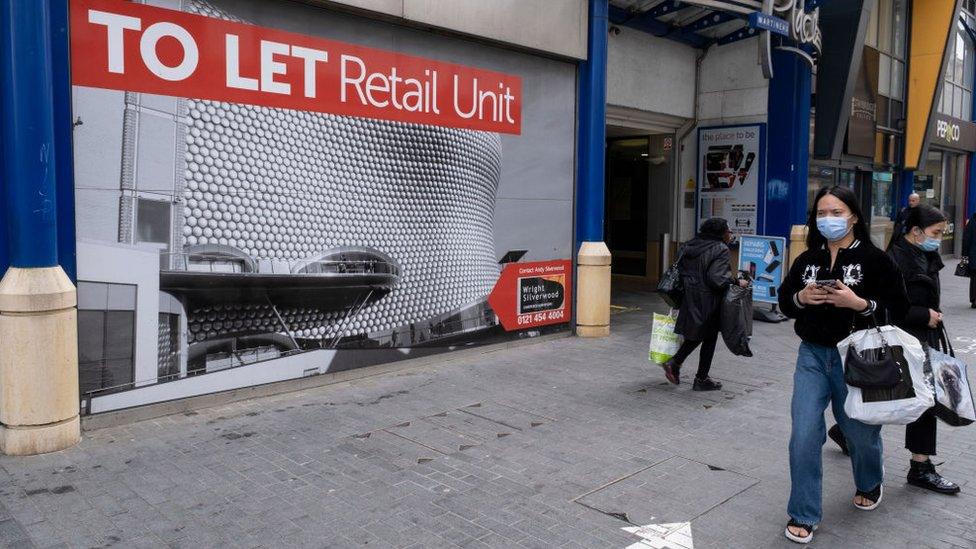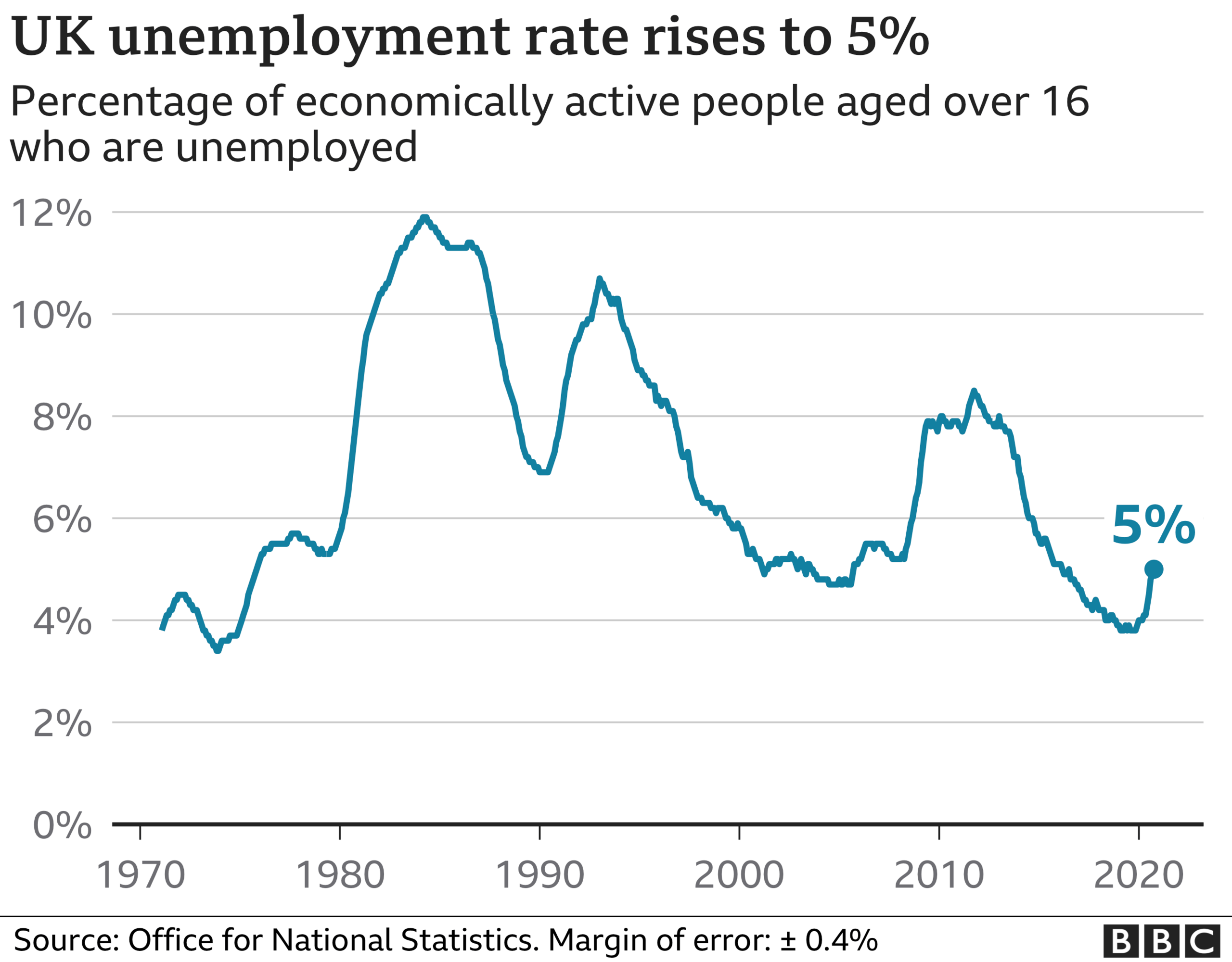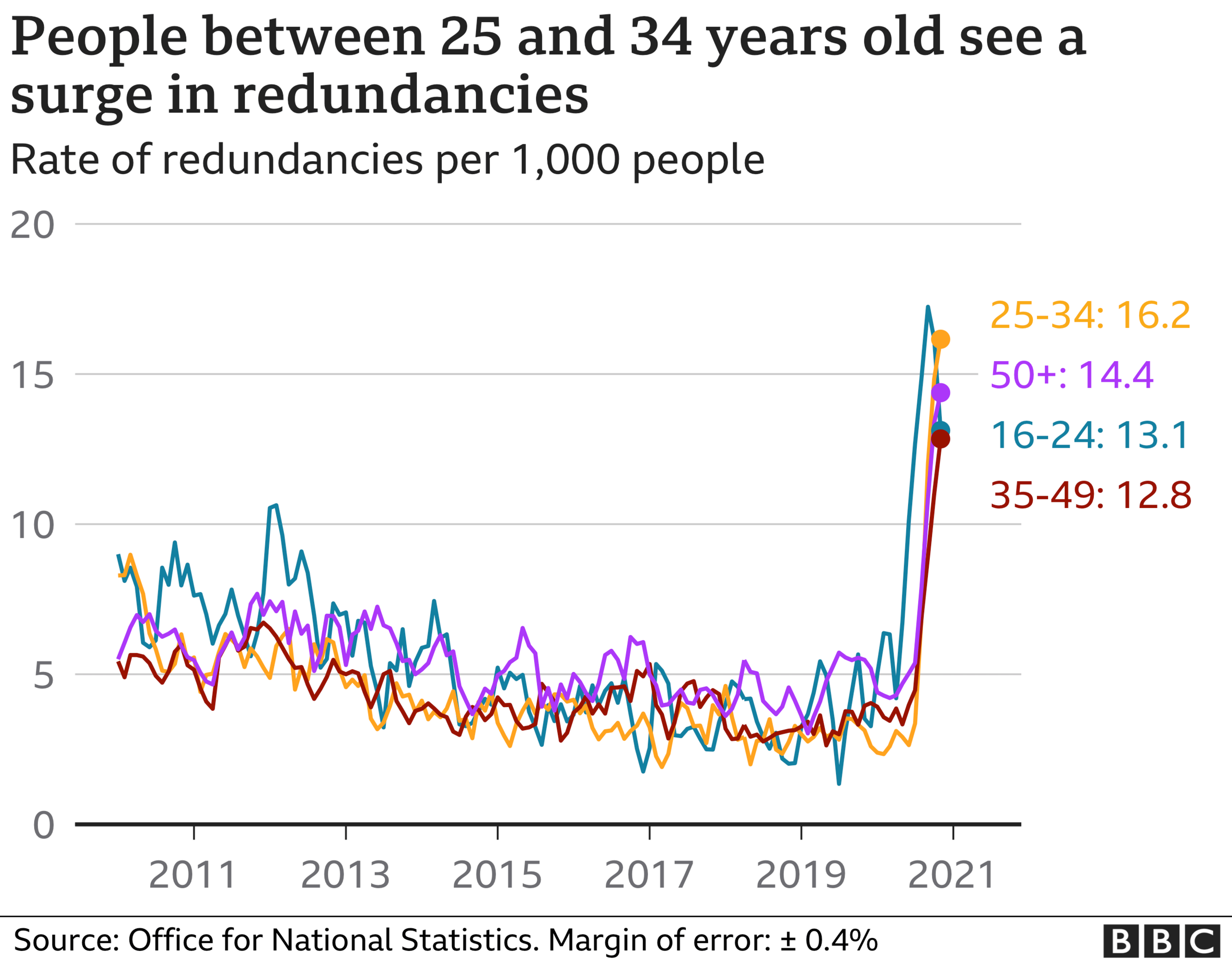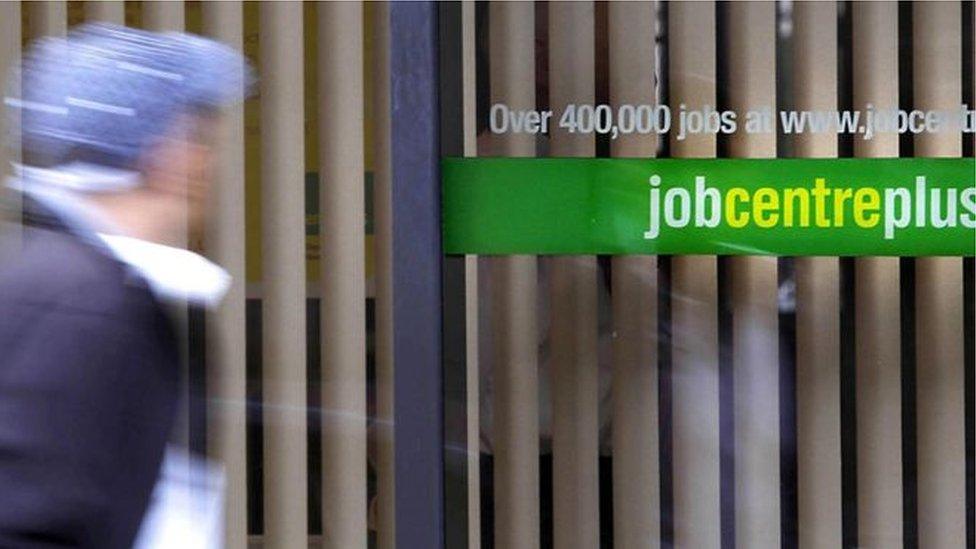Big rise in redundancies among young people
- Published
- comments

The number of people out of work in the UK has continued to rise, with those aged 25 to 34 facing the biggest risk of losing their jobs.
In the three months to November, people in that age group had a redundancy rate of 16.2 per 1,000, a fivefold increase on the same period a year earlier.
Unemployment rose to 5% from 4.9% as Covid continued to hit the jobs market.
Some 1.72 million were jobless, the Office for National Statistics said, external, the highest level in five years.
That was 418,000 more than in the same period the previous year, the biggest increase since late 2009.

What does redundancy feel like?

Abigail Ward, 27, freely admits that she was "a bit naive" when she began her latest job hunt after being made redundant as a store manager at J Crew in London last September.
Having spent the past five years since graduating in retail management, she has a passion for bricks-and-mortar retail and "the value of face-to-face customer interactions" - and it's an area she wants to stay in.
"I knew it would be hard, but I've been in this position before," she told the BBC.
"Back then, it only took me three or four weeks to find a role and maybe 10 job applications, so it all happened quite seamlessly, whereas this time around, it's definitely been a lot more difficult.
"I've probably sent off around 30 to 40 job applications in the last six months, the majority of which just go into the abyss. You never hear a word."
However, Abigail has managed to get to the final interview stage for a job - "with me and just one other candidate" - on four separate occasions.
"Unfortunately, I've missed out on each of those occasions," she says.
"There are so many hundreds of applications and it's so competitive," she adds. "It's definitely been a big challenge."

Which sectors are worst affected by unemployment?
The hospitality industry was worst hit by the rise in joblessness, followed by manufacturing.
In both sectors, the number of people unemployed was up by more than 50,000 on the previous year.
Across all age groups, redundancies rose to a record high of 14.2 per 1,000 people.
However, job vacancies also rose, with 81,000 new openings reported in the three months.

Is there any precedent for this?
ONS deputy chief executive Sam Beckett told the BBC that the UK had not seen such rises in unemployment since the global financial crisis.
"Payroll numbers show the number of workers on payroll have fallen by over 828,000 since the pandemic began," she added.
Employment was still at "relatively high levels" compared with other countries, Ms Beckett said, but workers aged 16 to 24 were suffering some of the biggest falls in employment.
However, she added: "We've currently got over 4.5 million people on the furlough scheme, so that does complicate the picture when you're trying to interpret what's going on in the labour market."

What does this mean for the economy?

While the main rate of unemployment has reached 5% for the first time in nearly five years, and this morning's numbers saw the largest increase in the numbers unemployed since the financial crisis, the chancellor must now be tempted to extend the furlough scheme to co-ordinate with the rollout of the post-vaccination reopening of the economy.
There are some bad numbers in this release, as would be expected from the pandemic restrictions, but they were expected to be a little worse. In the quarter to November, there were 418,000 extra unemployed over the same period in 2019 - the sharpest annual rise since the 2009 financial crisis.
The rate of redundancies reached a record of 14 per 1,000 people. Loss of jobs was concentrated in sectors such as retail and hospitality, most affected by social restrictions, which were reintroduced at the end of the period. Young people also faced the sharpest drops in employment. The jobs numbers are yet to reflect the current return to national lockdowns.
Though a significant rise over the past few pandemic-afflicted months, unemployment at 5% is still low by international standards and is being kept in check by the government's job retention furlough scheme. The current plan is to end the costly scheme in April, which economists expect would see a sharp jump in jobless figures to 6% or 7%.
But as the government continues to communicate caution about how fast restrictions on the economy will be lifted, business groups are adamant that the scheme needs to be extended into the early summer, or at least linked to the success of the vaccination programme.

What is the government saying?
"This crisis has gone on far longer than any of us hoped - and every job lost as a result is a tragedy," said Chancellor Rishi Sunak.
"Whilst the NHS is working hard to protect people with the vaccine, we're throwing everything we've got at supporting businesses, individuals and families.

"Our Plan for Jobs includes grants and loans so that firms can keep employees on, the furlough scheme to help protect jobs, and programmes like Kickstart alongside record investment in skills so that people can find their first job, their next job or a new job if needed," Mr Sunak added.
What happens next?
With no end in sight to the current lockdown measures, many firms fear that they may not be able to survive the pandemic, with pubs and restaurants bearing the brunt of the restrictions.
"The pandemic continues to rip through the labour market," said Tej Parikh, chief economist at the Institute of Directors.

"A return to tighter restrictions late last year will have stretched businesses' ability to retain staff. Meanwhile, the furlough scheme will have provided an invaluable cushion for many firms, preventing unemployment from edging up even further."
It is "crucial" for the chancellor to extend the furlough scheme and other Covid-19 economic support beyond the spring, he said.
"The forthcoming Budget is a vital moment to help firms retain, retrain and rehire workers as the vaccine rolls out. In particular, the government should provide a relief for employers' National Insurance contributions and support reskilling opportunities to shore up the recovery."
- Published30 September 2021

- Published24 January 2021

- Published22 January 2021
